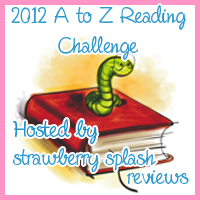We normally do not write about movies here, but I had to share this documentary because it is brilliant! Prohibition: A film by Ken Burns and Lynn Novick.
 In all fairness, I do have a soft spot for the 1910s-1920s. (I think I would have made an excellent spunky suffragette.) However, if you’re interested in American history, or just a well-made documentary, you should probably check this one out. I learned a lot about the era, and I really enjoyed all of the actual footage used.
In all fairness, I do have a soft spot for the 1910s-1920s. (I think I would have made an excellent spunky suffragette.) However, if you’re interested in American history, or just a well-made documentary, you should probably check this one out. I learned a lot about the era, and I really enjoyed all of the actual footage used.
Interesting tidbits among many that can be learned from the documentary:
After 1830, the average American over 15 years old drank almost seven gallons of pure alcohol a year! That comes to about three times as much as we drink today. Frankly, I don’t know how they functioned properly. If I drank three times the amount I drink now, I’d be completely useless.
The figures in terms of the economic consequences of Prohibition are staggering! In the state of New York, prior to Prohibition, nearly 75% of the state’s tax revenue came from taxes on liquor. Nationally, Prohibition cost the U.S. $11 billion in lost tax revenue. On top of which, it cost America another $300 million to enforce a practically unenforceable law.
I knew women played a large role in the Dry movement. With rampant alcohol abuse and the fact that spousal rape and abuse were not illegal, who can blame them? The Women’s Christian Temperance Union was quite a force. It’s still around, too. It is the oldest non-sectarian woman’s organization if the world. It also played a large role in women’s suffrage. What I did not know was there was another large, powerful woman’s group which was behind Repeal. The Woman’s Organization for National Prohibition Reform was founded by heiress and the first woman to serve on the Republican National Committee, Pauline Sabin.
Also, my new favorite historical figure is Lois Long the indelible flapper and writer for the New Yorker.
http://www-tc.pbs.org/s3/pbs.videoportal-prod.cdn/media/swf/PBSPlayer.swf
Watch Women in PROHIBITION Lois Long on PBS. See more from Ken Burns.
All of the facts (except maybe the bit about the WCTU which is on their website) can be found on the documentary or on the doc’s website: http://www.pbs.org/kenburns/prohibition/ You can basically watch all of it online, if that suits better.
A big thanks to PBS for funding such stellar productions.
Another big thanks to my pal, Brandon, for giving me the documentary as a Christmas present. I love it!




 industry, but I’ve only seen one “adult” store in Boston. At home, where I went to school and other cities I passed many more. But then I read this passage in American Rose: A Nation Laid Bare the Life and Times of Gypsy Rose Lee about how the Minsky brothers got around prohibition and moralists during their burlesque shows:
industry, but I’ve only seen one “adult” store in Boston. At home, where I went to school and other cities I passed many more. But then I read this passage in American Rose: A Nation Laid Bare the Life and Times of Gypsy Rose Lee about how the Minsky brothers got around prohibition and moralists during their burlesque shows:
